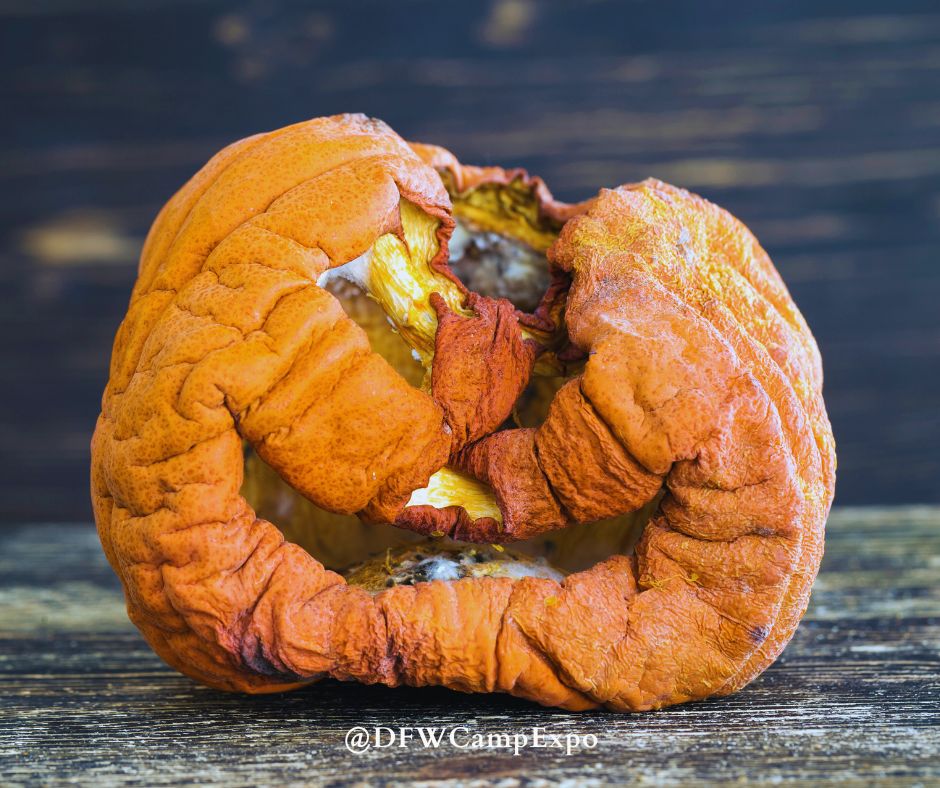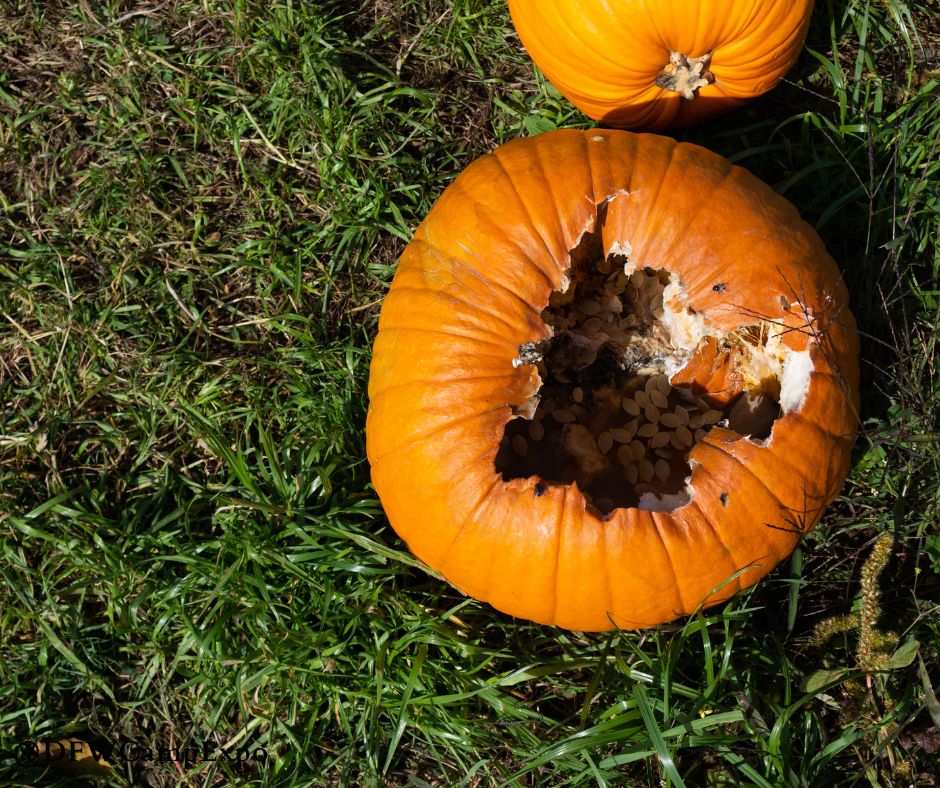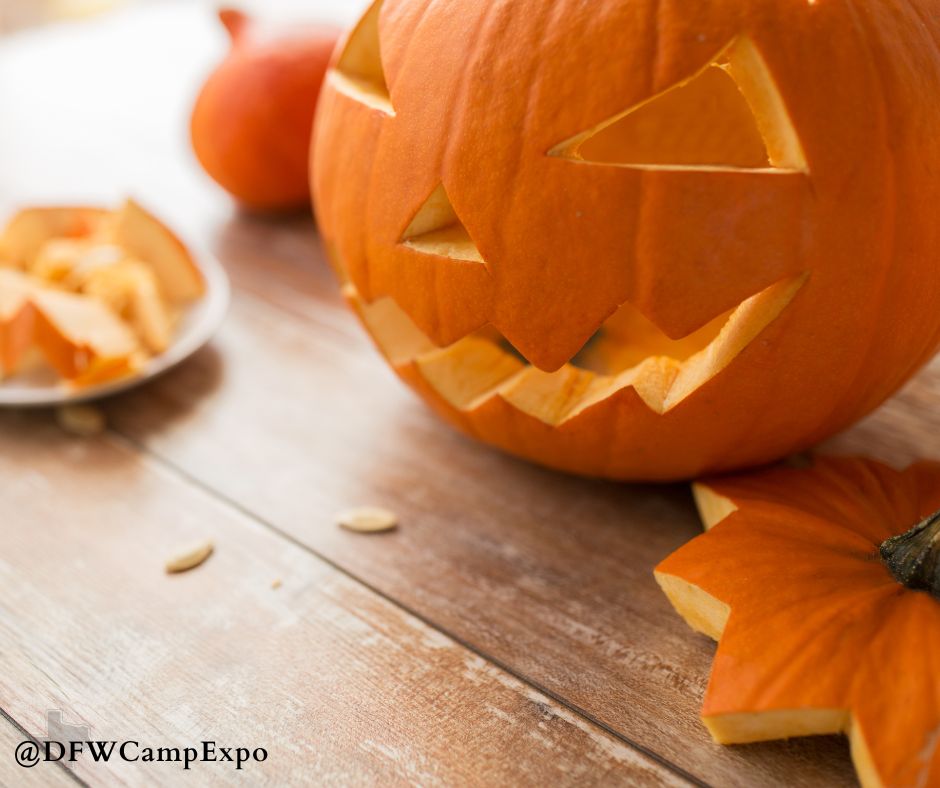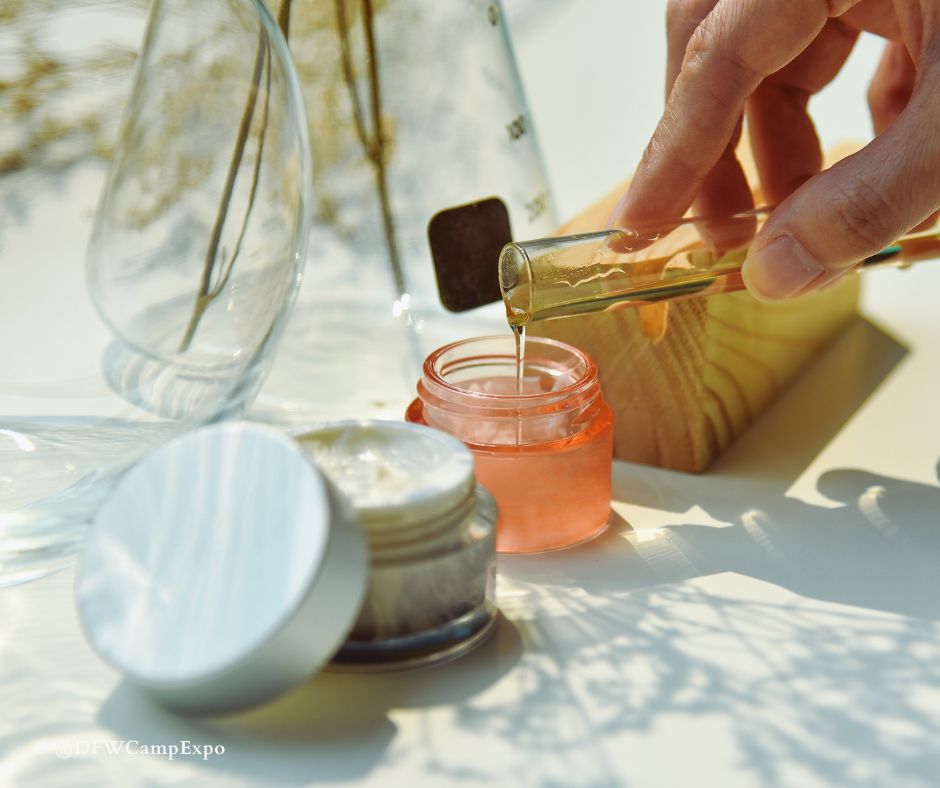How to keep a pumpkin from rotting is what all families want to know around the fall holidays, like Halloween.
Pumpkins, the iconic symbols of autumn, adorn our homes and gardens during the fall season. Whether carved into spooky jack-o’-lanterns for Halloween or displayed whole as part of a festive harvest décor, keeping pumpkins fresh and vibrant for as long as possible is a common challenge.
Luckily, there are several eco-friendly options to prevent your pumpkins from rotting away.
Here’s how to keep a pumpkin from rotting:


What causes a pumpkin to start rotting?
Pumpkins start rotting because of moisture, mold, bacteria, or simply age. These nasties sneak into the pumpkin through nicks, cuts, or even the stem. Once inside, they break down the pumpkin’s flesh, turning it into a mushy mess.
How long does it take for an uncarved pumpkin to rot?
An uncarved pumpkin can last 8-12 weeks if you keep it cool, dry, and out of direct sunlight. So, if you want your pumpkin to stick around, find a cozy spot away from the heat!
What to do with a rotting pumpkin?
When your pumpkin starts looking like a zombie, don’t just toss it in the trash! You can compost it to give back to the earth or turn it into a spooky bird feeder. Just cut out a hole, fill it with seeds, and watch the birds feast!
How to Keep Your Pumpkin From Rotting in 8 Steps


1. Choose the Right Pumpkin
The lifespan of your pumpkin starts with its selection. Here are some tips for picking the perfect pumpkin:
- Firmness: Choose a pumpkin that feels firm and solid. Soft spots or bruises can indicate that the pumpkin is already starting to rot.
- Stem: A pumpkin with a long, sturdy stem is ideal. The stem acts as a handle and also helps the pumpkin last longer. Avoid pumpkins with broken or missing stems.
- Color: Look for a pumpkin with a deep, rich color. Dull or uneven coloring might indicate poor health or early signs of decay.
- Shape: While the shape is more of a personal preference, a symmetrical pumpkin is less likely to have weak spots that could lead to early rotting.
2. Clean Your Pumpkin
Cleaning your pumpkin thoroughly can help remove any dirt, bacteria, or fungi that could accelerate rotting. Here’s an easy, eco-friendly pumpkin cleaning method:
- Water and Vinegar Solution: Mix one part white vinegar with three parts water. Wipe down the entire surface of the pumpkin with this solution using a soft cloth or sponge.
- Eco-Friendly All-Purpose Cleaner: There are many all-purpose cleaners available. Use the app for healthy living cleaner options. Download it here to help you find the best eco-friendly all-purpose cleaner.
3. Avoid Carving Until The Timing is Perfect


Carved pumpkins tend to rot much faster than whole pumpkins. If your heart is set on carving, try to delay it as close to Halloween as possible.
Instead of carving, you can also consider these alternatives:
- Painted Pumpkins: Use eco-friendly, non-toxic paints to decorate your pumpkins. This method allows you to create beautiful designs without breaking the pumpkin’s skin, helping it last longer.
- Stickers: There are many decorative stickers and decals available that can give your pumpkin a festive look without compromising its integrity.
4. Use Natural Preservatives
Several natural substances can help extend the life of your pumpkin. These eco-friendly options are safe for the environment and effective at preventing rot:
- Beeswax: Applying a thin layer of melted beeswax to the surface of your pumpkin can create a protective barrier against moisture and bacteria. Simply melt the beeswax and brush it onto the pumpkin’s skin, allowing it to dry completely.
- Coconut Oil: Similar to beeswax, coconut oil can be used to coat your pumpkin. It helps to seal in moisture and protect against bacteria. Rub a small amount of coconut oil over the entire surface of the pumpkin.
- Essential Oils: Certain essential oils, like tea tree oil or peppermint oil, have antimicrobial properties. Mix a few drops of essential oil with water in a spray bottle and lightly mist your pumpkin. This can help deter mold and bacteria.
5. Create a Pumpkin Preservation Spray
Using natural ingredients, you can make an eco-friendly pumpkin preservation spray. This spray can help keep your pumpkin poppin’ for longer.
How to Make a Simple Pumpkin Preservation Spray
Ingredients:
- 1 cup of water
- 1 tablespoon of white vinegar
- 1 teaspoon of tea tree oil
Instructions:
- Mix the water, vinegar, and tea tree oil in a spray bottle.
- Shake well to combine.
- Spray the solution all over your pumpkin, focusing on any carved areas or cut surfaces if applicable.
- Allow the pumpkin to dry completely.
6. Store Your Pumpkin Properly
Proper storage is crucial for extending the life of your pumpkin. Here are some storage tips:
- Cool and Dry Place: Keep your pumpkin in a cool, dry place away from direct sunlight. Sunlight can cause the pumpkin to heat up and dehydrate, leading to faster decay.
- Elevate the Pumpkin: To keep your pumpkin off the ground, place it on a pallet, straw, or cardboard. This prevents moisture from accumulating under the pumpkin, which can cause it to rot.
- Avoid Freezing Temperatures: If temperatures drop below freezing, bring your pumpkin indoors. Freezing can cause the pumpkin to crack and deteriorate rapidly.
7. Use Natural Pest Deterrents


Pests can accelerate the rotting process by introducing bacteria and fungi to your pumpkin. Use eco-friendly methods to keep pests at bay:
- Peppermint Spray: Mix water with a few drops of peppermint essential oil and spray around the base of your pumpkin. Peppermint is a natural pest deterrent.
- Cinnamon and Cloves: Sprinkle a mixture of ground cinnamon and cloves around your pumpkin. The strong scent repels pests and also has antifungal properties.
8. R.IC: Rest in Compost
Despite all efforts, pumpkins will eventually start to decompose.
When this happens, composting is an eco-friendly way to dispose of your pumpkin. Composting not only reduces waste but also creates nutrient-rich soil for your garden.
Here’s how to compost your beloved Halloween pumpkin:
- Remove Seeds: Scoop out any remaining seeds from your pumpkin. You can save these seeds for planting next year or roast them for a tasty snack.
- Cut into Pieces: Chop your pumpkin into smaller pieces to speed up the composting process.
- Add to Compost Bin: Place the pumpkin pieces in your compost bin, layering them with other compostable materials like leaves, grass clippings, and kitchen scraps.
- Maintain Your Compost: Turn your compost regularly to ensure proper aeration and decomposition. In a few months, you’ll have rich compost to use in your garden.
Show it off


Show us your best pumpkin carvings, creations, and prime patch picks! Tag us on Instagram @DFWCampExpo for a chance to be featured.
You Might Also Like:

